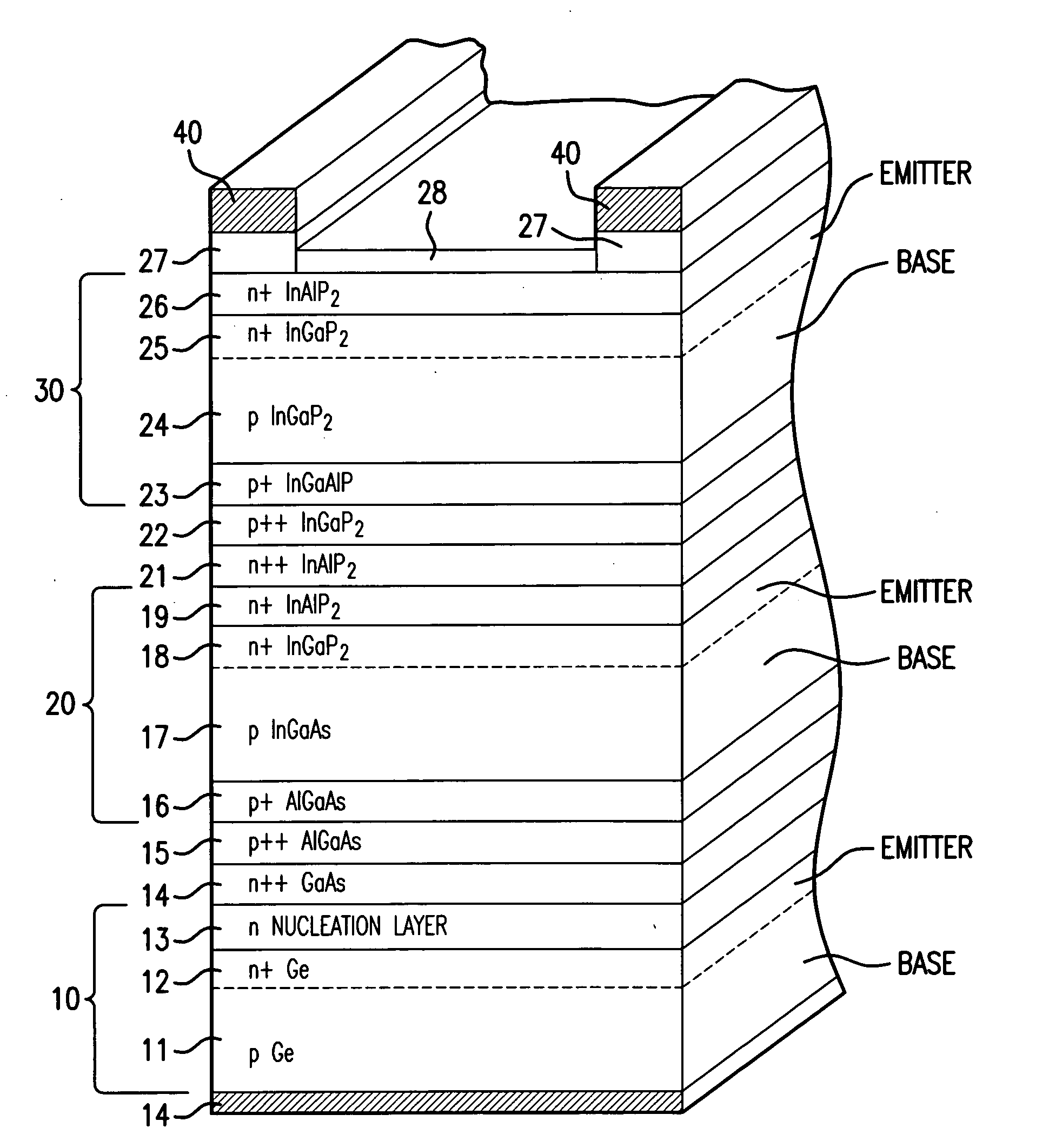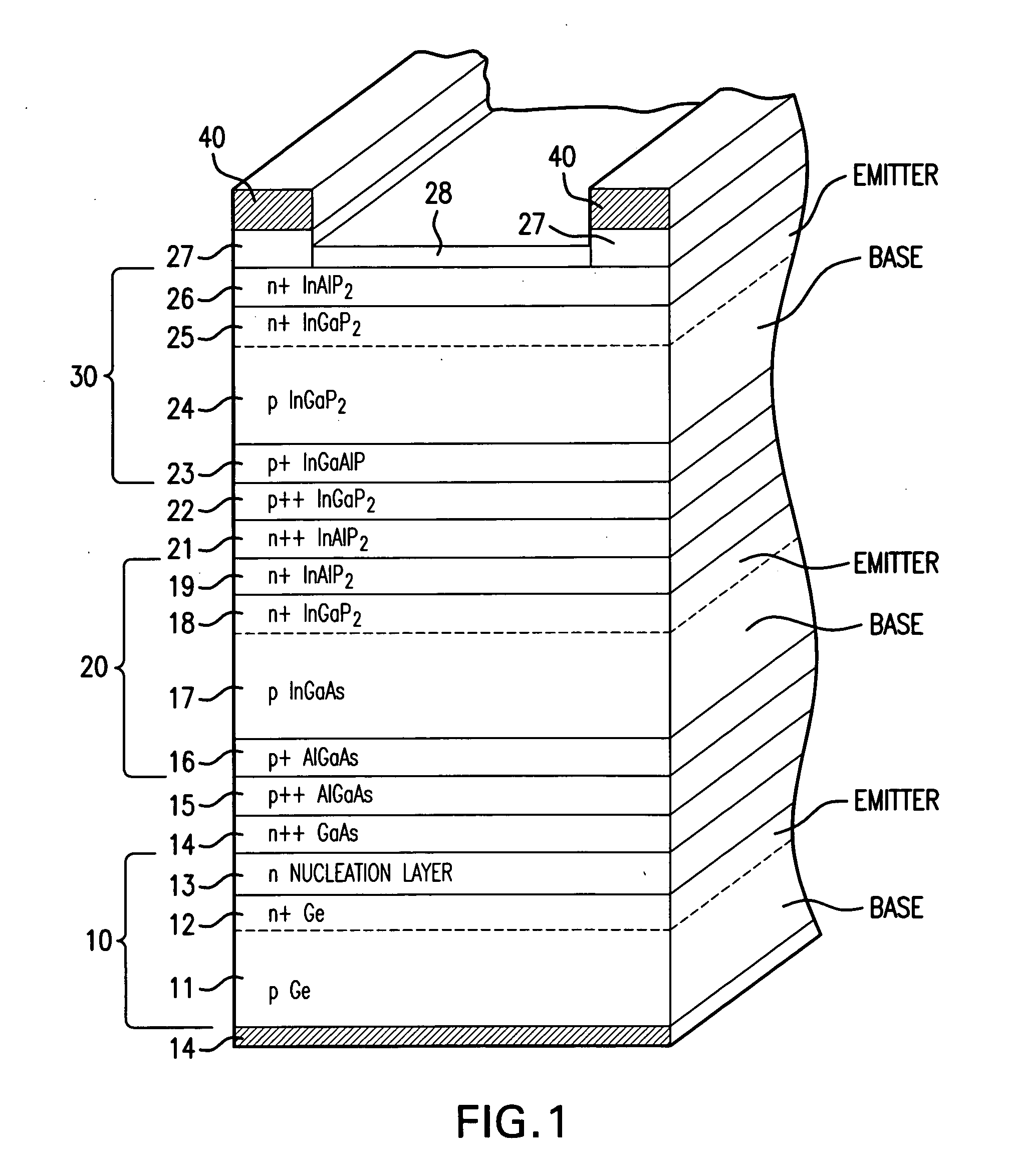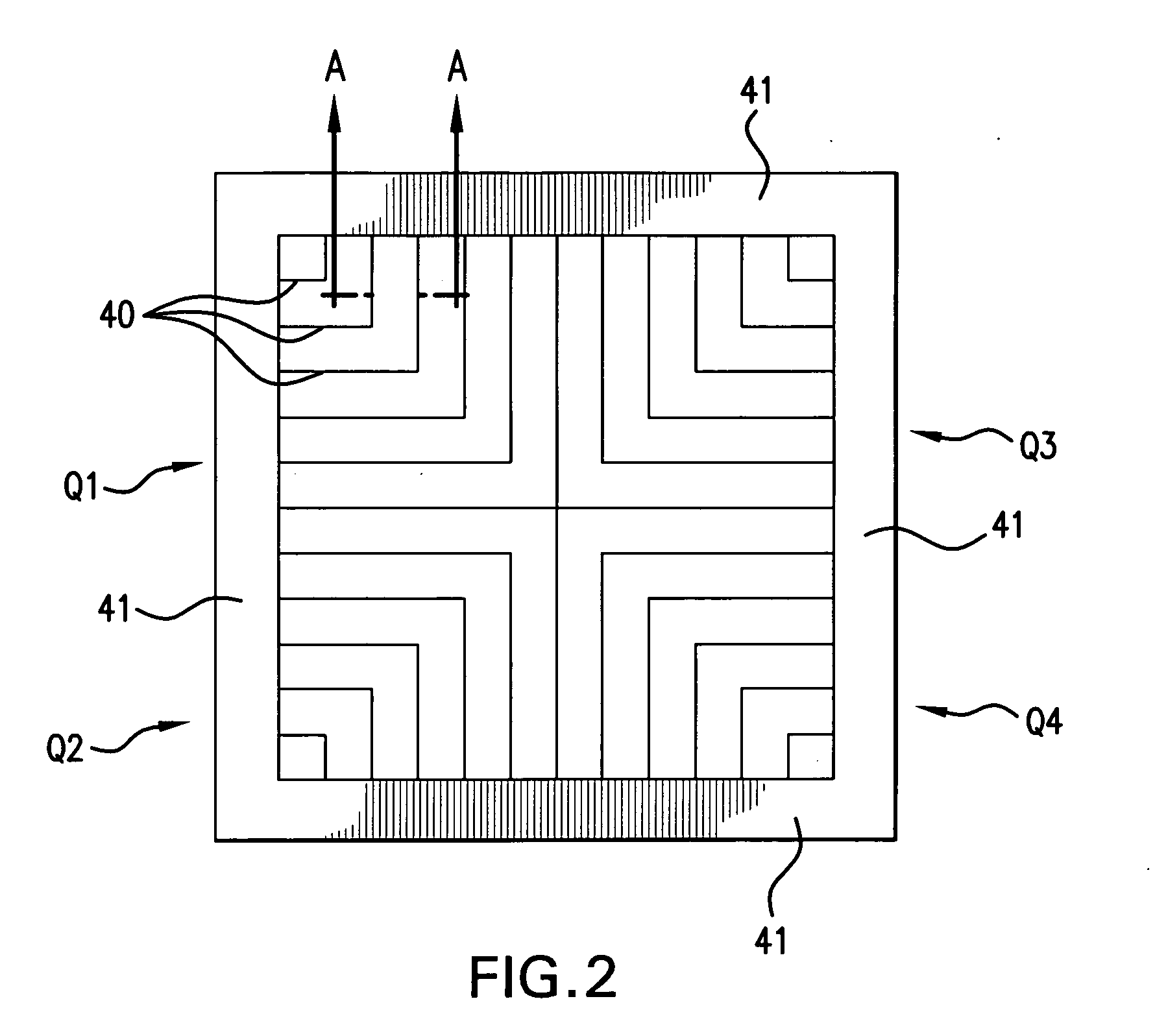High concentration terrestrial solar array with III-V compound semiconductor cell
a solar array and compound semiconductor technology, applied in the field of solar arrays for concentrator terrestrial solar power systems, can solve the problems of existing commercial terrestrial solar power systems configured and optimized, v semiconductor solar cells have not yet been designed for optimum coverage, and the cell has not yet been configured or optimized, so as to achieve maximum efficiency, high current, and maximize absorption
- Summary
- Abstract
- Description
- Claims
- Application Information
AI Technical Summary
Benefits of technology
Problems solved by technology
Method used
Image
Examples
Embodiment Construction
[0023]Details of the present invention will now be described including exemplary aspects and embodiments thereof. Referring to the drawings and the following description, like reference numbers are used to identify like or functionally similar elements, and are intended to illustrate major features of exemplary embodiments in a highly simplified diagrammatic manner. Moreover, the drawings are not intended to depict every feature of the actual embodiment nor the relative dimensions of the depicted elements, and are not drawn to scale.
[0024]The related parent U.S. patent application Ser. No. 12 / 069,642 of assignee, herein incorporated by reference, relates generally to a multijunction III-V compound semiconductor solar cell with material composition and band gaps to maximize absorption in the AM1.5 spectral region, and a thickness of one micron or greater so as to be able to produce in excess of 15 watts of DC power with conversion efficiency in excess of 37%. The aggregate surface ar...
PUM
 Login to View More
Login to View More Abstract
Description
Claims
Application Information
 Login to View More
Login to View More - R&D
- Intellectual Property
- Life Sciences
- Materials
- Tech Scout
- Unparalleled Data Quality
- Higher Quality Content
- 60% Fewer Hallucinations
Browse by: Latest US Patents, China's latest patents, Technical Efficacy Thesaurus, Application Domain, Technology Topic, Popular Technical Reports.
© 2025 PatSnap. All rights reserved.Legal|Privacy policy|Modern Slavery Act Transparency Statement|Sitemap|About US| Contact US: help@patsnap.com



